Software Engineering Assignment: Housing and Transport System for eHome
Question
Task: Your task in this software engineering assignment is to analyze the given case study, apply the principles of requirement engineering by eliciting functional and non-functional requirements, and documenting system and user requirements specification. You will also choose appropriate modeling techniques to model the system and design the system architecture.
Problem:
People residing in owner occupied or rented houses maintain their households which is an essential process requiring continuous collection, storage, and use of information originating from many external sources. Household maintenance includes organising utility services, recording equipment purchase details, organising insurance, monitoring and control heating, ventilation, and air-conditioning (HVAC), undertaking cleaning and repairs of household appliances and vehicles.
An eHome provides a conceptual model incorporating a Family System and subsystems for home and personal life management where necessary information can be stored, accessed, and some level of automation can be achieved for carrying out many tasks. There are many External Entities with which Family System interacts such as schools for children’s education, medical professionals for health-related activities. One of the identified subsystems within the Family system is Housing and Transport. There are few external entities identified as part of this subsystem and these include:
- Product suppliers
- Government agencies
- Service providers
a. Energy supplier
b. Water supplier
c. Communications.
You are asked to develop the Housing and Transport System (HTS) which will be integrated into eHome with other subsystems. The initial task is to complete the requirements engineering process by eliciting functional, non-functional, system and user requirements. You should also develop models of system architecture, context model, use cases, and behavioural models such as sequence diagrams.
The users are the ’Home Users’ who are public residing in suburban homes who will not have insight into organising information, or automating tasks. Therefore, Home Users cannot provide guidance in the design or functionalities of the HTS. An example of information originating from a product supplier can be the details of a refrigerator purchase. This includes the brand, model number, warranty, price, purchase date, seller details. Using this example, the Home User should be able to input purchase details for any equipment/appliance purchase using an easy-to-use interface. The other features that would help the Home User could be reminders on expiry date of warranty or any periodic service. Home User should be able to display a list of appliances in a report format.
There are many service providers a Home User may use and considering the example of a communications provider, this may include ISP name, contract start date, payment date, contract period, contact details, and contracts document. Using this example, a generic input interface and data collection, storage, and access can be created.
Government agencies include local councils, the Australian Taxation Office (ATO), and any other similar agencies.
Privacy and security of data are important as these belong to individuals or families. Only authorized person/s should be allowed to access the information. There should be two levels of access rights, view and modify. The HTS users are people with different levels of information technology skills. Therefore, ease of use, and user friendly interface, low maintenance are important.
An initial prototype of the HTS should be developed as a Java desktop application with a front-end GUI, and a backend database. You start with a context diagram to understand the information flow, then follow MVC pattern to develop the system architecture.
You should develop:
• Context Model: Show the information flow between External Entities and HTS
• System architecture: Use Model -View-Controller
• System requirements including functional and non-functional requirements
• Use cases to depict the functionality of the system: You can use your own experience or literature review or external input to understand inputs and any automation needs
• Sequence Diagrams for a product details entry and a product specific information search and display
• Use case diagrams
• UML class diagram Identify the classes required
• GUI design
This should be consistent with the Use cases and use case diagram. You can use SceneBuilder to create GUI.
Answer
1. Introduction to the context of Software Engineering Assignment
Smart homes are very popular in the twenty-first era. A majority of the time, an automated machine is extremely relevant mostly in the sector of factory optimization as well as household automation is already playing a role in making personal activity intelligent. This usually takes place in a computer controlled home. This could be divided into several categories. Many of them would be managed from afar with the help of a mobile. Next, it may operate an engine or actuator that guarantees stability, including a gate lock. Automation incorporated in the transport system to make it more quick and efficient is also the greatest innovation in this century. For instance, in daily lives when we are in a hurry to get to the office or somewhere important and we could not wait for longer in the bus stops and railway station, we can take our phone and book a cab with just voice command.
2. Context diagram
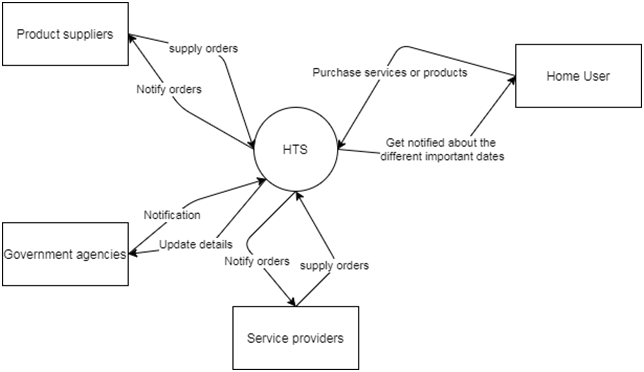
Figure 1: context diagram
(Source: created by the student)
3. Use case diagram
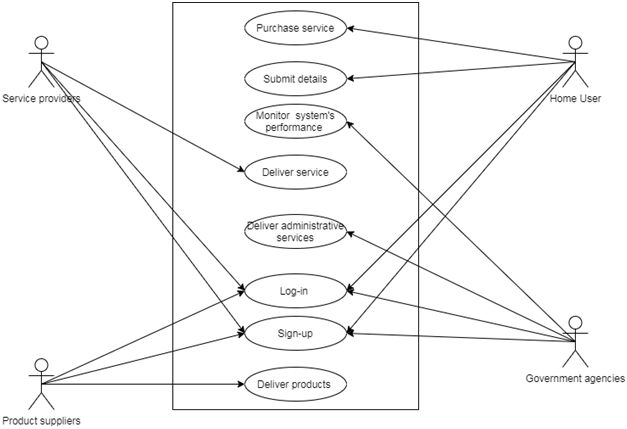
Figure 2: Use case diagram
(Source: created by the student)
4. Use cases
|
Use case name |
User registration |
||
|
Primary Actor |
System user |
Secondary Actor |
System |
|
Explanation |
Such use case concerns the platform's authentication of potential customers, during that they are able to purchase every element through the virtual collection. |
||
|
Trigger |
After searching the internet resource, a fresh user wishes to enroll in the virtual database |
||
|
Pre-condition |
· Potential users must provide accurate and authentic information to the software; · Potential users must complete the whole questionnaire; · The server validates the accuracy of the evidence sent. |
||
|
Post condition |
That freshly enrolled consumer's identification Info as well as other information would be saved within the database. |
||
|
Normal flow |
· The following is the usual process of such an use case: · A newest client looks at just the collection; · Each incoming client goes to the network carrier's login site; · The consumer then completes the whole inquiry template; · Each consumer fills out the form; · This software compares the information to the current information; within the registry to determine its uniqueness; · Finally, individual receives notification of active enrollment. |
||
|
Alternative flow |
· Each collection would display an error message on the display and refuse to complete the procedure · Third point would be re-assembled by the tradesperson. · Through phase 4 of the regular process, new user send redundant or incomplete information. |
||
|
Exception |
· Condition 1. This procedure would be rejected when the incoming consumer sends inaccurate or redundant information to the device; · Condition 2. When the fresh user shuts down the device at every stage, the whole procedure would be deferred. |
||
|
Priority |
High |
||
|
Intensity of usability |
High |
||
|
Business rules |
Thesystem can verify the information's uniqueness by comparing it to the archive. |
||
|
Additional details |
A secure Ethernet link must be established for the incoming user Prejudices; These have been concluded that once the procedure has completed correctly according to the usual method, the programme would properly register the newest consumer as well as archive all related information in the server. |
||
5. System architecture
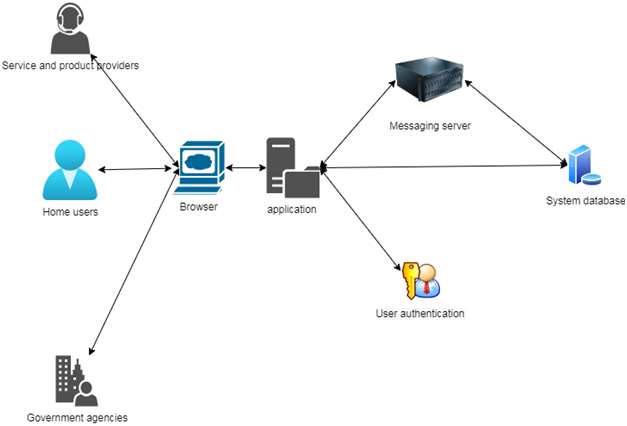
Figure 3: System architecture
(Source: created by the student)
6. System Requirements
The type of home automation system to be used here would be a wired home automation system that controls various appliances through communication cables. In this form of automation, all home devices are connected via a communication cable to the main controller (programmable logic controller). The machinery is connected to the main controller by actuators. All processes are centralized via the server, which interacts constantly with the controller. The main hub is the heart of the whole system. There needs to be multiple users’ interfaces or touch screens throughout the home for controlling several appliances with ease (Jabbaret al. 2019). The garage system, within the whole system should be able to care take certain chores people often tend to forget such as timely cleaning and repair of appliances and vehicles. The user interface should be easy to understand and use. The complicated programs and logics are embedded into the main and the sub controllers. The sub controllers feed to the main controller and the actions are done by actuators. The GUI (Graphical User Interface) needs to be concise and precise as it can and will be used by different age groups. Each part of the user interface should control separate pieces of the whole system such as ventilation and air-conditioning, heating, lights etc. Within the user interface, the different segments should be in a swipe mechanism where users or people will be able to access those separated parts via swiping the screen (Vishwakarmaet al. 2019). Then those segments must have their own sub-controllers that connect with the main controller. The security system, if need be, can also be integrated with the user interface panels where voice or biometrics can be used to lock, unlock the automation system. The necessary amenities and their billings should also be made accessible by the user interface,
The overall system and its components such as the controllers, actuators and other necessary parts such as various microcontroller chips should not be too expensive or rare as it reduces the availability of the whole system. The HTS system is to be produced in mass scales as more and more people will start using it for their own convenience (Hoseket al. 2017). The system should not be too complex to understand and implement throughout the house. The systems, the appliances and their expiry dates should be implemented as alerts as the end user would not be able to change any appliance of the house with any other appliance available in the market as it will contradict with the whole system and might compromise security.
The response time of this overall system should be as short as possible. The renewal of the warranties or the reminder about remaining bills should be notified to the users prior to the dates. If the response time is not smooth, it will give a junky feeling and could displease the customers or the end users. The response in case of an emergency should also be facilitated into the HTS (Housing and Transport System) (Teymourzadehet al. 2013).
7. User Requirements
The user requirements of the home automation system can be directed into three major parts such as functional requirements, non-functional requirements and administrator requirements.
7.1 Functional Requirements:
• First of all the system should be capable of registering new users.
• Then, the system should be capable of checking the user credential’s originality.
• The system should be capable of storing all kinds of data automatically.
• The functional requirements can be classified as the utter needs of the end users. These may incorporate answering to vocal commands and carrying out tasks such as purchasing different appliances and services from different providers.
• The system will only do certain chores if and when someone asks them to do it. Such as turning the AC on or taking the trash out. These requirements are the most complex ones as several switch cases are to be used in this one. The various switch cases are for various commands (Cummings, Stimpson and Clamann, 2016).
• A user may use different types of vocal commands and different users might use similar types of vocal commands.
• The system needs to be able to identify different voices with different accents.
• Apart from the voice command features, the system should be able to carry out tasks implemented by the user interfaces.
• If an end user wishes to buy or replace certain appliances, they can do that by using the system and contact their product suppliers to update details (Alamet al. 2020).
• Vocal commands could be used to create perfect ambience by controlling the lights.
7.2 Non-functional Requirements:
• The non-functional requirements of an HTS would be when the system senses certain things such as the atmosphere and acts as necessary.
• The system should be able to sense sunlight, temperature and other atmospheric situations.
• The security system is one of the most important requirements as it prevents the whole system from being compromised (Ramos et al. 2018).
• The overall system should be reliable when it comes to purchasing or renewing different services from different vendors.
• During the initial effective authentication, users should update the credential that was originally given to them. Furthermore, the original can never be seen again
• Users are never permitted to make changes to the pay records. A safety operator must be notified about such an endeavor.
• The evaluation process must be kept for any botched effort by a recipient to enter a piece of information.
• It is important that the programme be compact. As a result, switching from one OS to another is not a concern.
• Data security, the sale of limited inventions, intangible properties protection and other issues can all be investigated.
• This automation system will have some sensor such as smoke sensor, which alerts the users prior to any dangerous situation so that user can have some time for precaution. Some other sensors like humidity sensor which will control the HVAC.
• To handle all these activities with efficiency it needs to be available for 24*7 to give the user a hustle free living environment (Afreen, Khatoon and Sadiq, 2016).
• The system will automatically notify the providers about the procurement things or services.
• Government agencies will update their notification about any changes in legal counsels or societal matters to the system and the system will notify the user in a periodic manner.
7.3 Administrator requirements
• Administrator requirements include the base working software or OS that is the backbone of the system.
• The administrator will maintain any and every databases that are incorporated into the system.
• The administrator will notice any system malfunction or security breaches and notify the concerning authority about it (Riazet al. 2017).
• The administrator is supposed to perpetuate the billing documents and act accordingly.
• The administrator notifies about product orders to the product suppliers and oversees the product delivery.
• The administrator notifies the government agencies about any changes and updates its own details.
• The administrator will notify the authority if there is any need of upgrading.
• The whole communication system with the service providers is overseen by the administrator (Noor et al. 2017).
• The administrator will remind the user about any concerning dates about warranties, insurances and expiries.
• The administrator is also the part of the whole system that controls and maintains each and every aspect of home automation systems.
• Administrator also ensures that the whole system runs as efficiently and smoothly as possible.
8. Sequence diagram
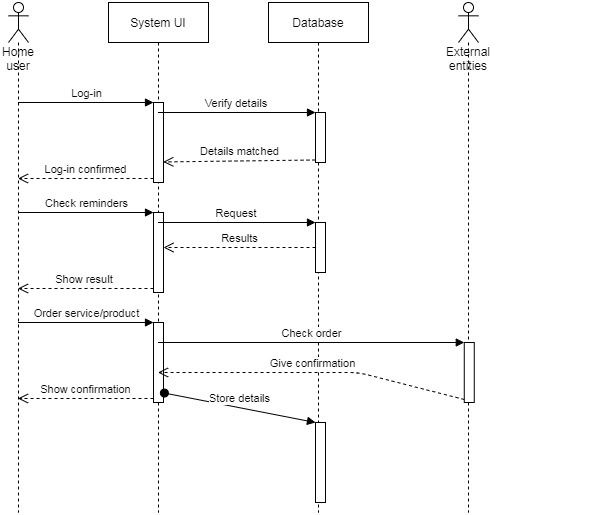
Figure 4: Sequence diagram
(Source: created by the student)
9. UML class diagrams
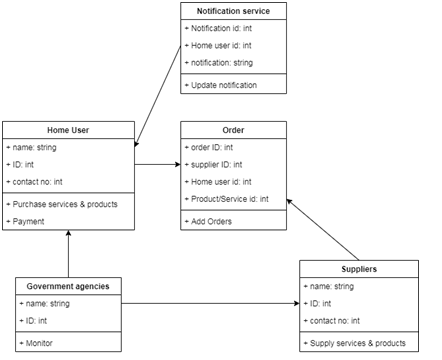
Figure 5: Class diagram
(Source: created by the student)
10. GUI design
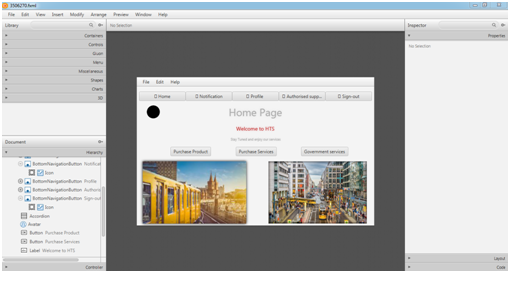
Figure 6: GUI development with SceneBuilder
(Source: created by the student)
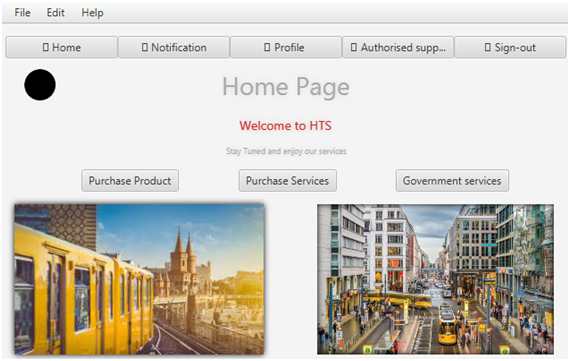
Figure 7: GUI of the homepage of the HTS
(Source: created by the student)
11. Conclusion
This plan proposes the concept of automated home appliances, which can accommodate a wide range of home automated testing technologies. Wireless networking, cameras, surveillance, including mapping are all part of a modern house. Home automation is a large structure that incorporates a variety of technology and software which could be utilized to establish home protection and power. The developed components were addressed throughout this unit, including detector circuitry; home surveillance as well as mapping using IP device, smartphone alerts, as well as a house navigator.These seems to be a number of improvements which could be introduced to this device to improve detecting including sensors performance. There are a variety of other devices which could be utilized to improve residential protection and safety such as a compression detector that must be placed across the house to determine when anyone is about to enter. By incorporating the GSM framework to change the direction automatic alerts are sent to render this device quite competent.
Reference List
Afreen, N., Khatoon, A. and Sadiq, M., (2016).A taxonomy of software’s non-functional requirements. In Proceedings of the second international conference on computer and communication technologies (pp. 47-53).Springer, New Delhi. Available at: https://www.researchgate.net/profile/Sudipta_Roy4/publication/281841250_Segmentation_of_the_
Human_Corpus_Callosum_Variability_from_T1_Weighted_MRI_of_Brain/links/
593e108da6fdcc17a95a3818/Segmentation-of-the-Human-Corpus-Callosum-
Variability-from-T1-Weighted-MRI-of-Brain.pdf#page=68 [Assessed 14th April, 2021].
Alam, T., A Salem, A., Alsharif, A.O. and Alhujaili, A.M., (2020).Smart home automation towards the development of smart cities. TanweerAlam.Abdulrahman A. Salem. Ahmad O. Alsharif. Abdulaziz M. Alhujaili." Smart Home Automation Towards the Development of Smart Cities.", Computer Science and Information Technologies, 1(1). Available at: https://www.infona.pl/resource/bwmeta1.element.ID-252ae4e9-81d2-4552-90f4-16a69cf1e40f/content/partDownload/content/full-text/407c5fc2-3958-45e6-a4cd-cb0ea0972d0b [Assessed 14th April, 2021].
Cummings, M.L., Stimpson, A. and Clamann, M., (2016).Functional requirements for onboard intelligent automation in single pilot operations.In AIAA Infotech@ Aerospace (p. 1652). Available at: http://hal.pratt.duke.edu/sites/hal.pratt.duke.edu/files/u10/Cummings%20et%20al%20AIAA2015.pdf [Assessed 14th April, 2021].
Hosek, J., Masek, P., Andreev, S., Galinina, O., Ometov, A., Kropfl, F., Wiedermann, W. and Koucheryavy, Y., (2017). A SyMPHOnY of integrated IoT businesses: Closing the gap between availability and adoption. IEEE Communications Magazine, 55(12), pp.156-164. Available at: https://www.academia.edu/download/55398570/08198821.pdf [Assessed 14th April, 2021].
Jabbar, W.A., Kian, T.K., Ramli, R.M., Zubir, S.N., Zamrizaman, N.S., Balfaqih, M., Shepelev, V. and Alharbi, S., (2019). Design and fabrication of smart home with Internet of Things enabled automation system. IEEE Access, 7, pp.144059-144074.Avaiable at: https://ieeexplore.ieee.org/iel7/6287639/8600701/08846205.pdf [Assessed 14th April, 2021].
Noor, H., Shahid, F., Sajid, M.U., Jabar, S. and Mateen, A., (2017). Home automation system (Doctoral dissertation, University of Management and Technology Lahore). Available at: http://escholar.umt.edu.pk:8080/jspui/bitstream/123456789/2668/1/Summary.pdf [Assessed 14th April, 2021].
Ramos, F.B.A., Costa, A.A.M., Perkusich, M., Almeida, H.O. and Perkusich, A., (2018), July. A Non-Functional Requirements Recommendation System for Scrum-based Projects. In SEKE (pp. 149-148). Available at: https://www.researchgate.net/profile/Felipe_Ramos8/publication/325723179_A_Non-Functional_Requirements_Recommendation_System_for_Scrum-based_Projects/links/5b216333aca272277fa95bf9/A-Non-Functional-Requirements-Recommendation-System-for-Scrum-based-Projects.pdf [Assessed 14th April, 2021].
Riaz, M.T., Ahmed, E.M., Jamil, A. and Jathol, A.A., (2017). Wireless android based home automation system. Adv. Sci. Technol. Eng. Syst. J, 2(1), pp.234-239. Available at: https://www.researchgate.net/profile/Muhammad_Tanveer_Riaz/publication/316970394_ Wireless_Android_Based_Home_Automation_System/links/59279a5a458515e3d4620940/ Wireless-Android-Based-Home-Automation-System.pdf [Assessed 14th April, 2021].
Teymourzadeh, R., Ahmed, S.A., Chan, K.W. and Hoong, M.V., (2013), December. Smart GSM based home automation system. In 2013 IEEE conference on systems, process & control (ICSPC) (pp. 306-309). IEEE. Available at: https://arxiv.org/pdf/1806.03715 [Assessed 14th April, 2021].
Vishwakarma, S.K., Upadhyaya, P., Kumari, B. and Mishra, A.K., (2019), April.Smart energy efficient home automation system using iot. In 2019 4th international conference on internet of things: Smart innovation and usages (IoT-SIU) (pp. 1-4). IEEE. Available at: https://www.static-contents.youth4work.com/y4w/48d97b27-c6b8-4f46-ba3e-4ee7e080090c.pdf [Assessed 14th April, 2021].












